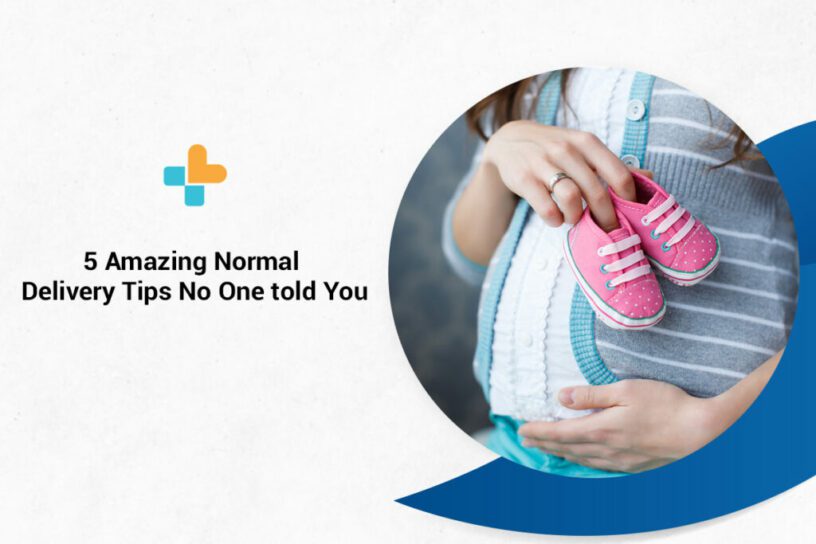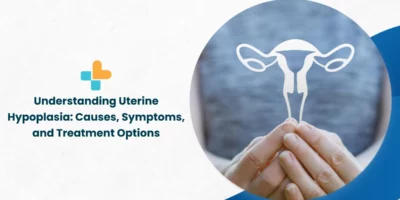According to a news article by WHO, there has been an alarming rise in cesarean childbirths in recent years. It explains that more than 1 in 5 childbirths use cesarean section delivery. However, like with all surgical procedures, it can be potentially harmful to the mother and, at times, even the child. Cesarean section delivery must be the last resort for mothers with medical issues or if the child is presenting in an unconventional position.
Understandably, people fear vaginal deliveries because of painful labor. However, it is necessary to understand that vaginal or normal delivery is the safest type of childbirth for the mother and the child. Here are some helpful normal delivery tips .
How Do You Define a ‘Normal Delivery’?
What constitutes “normal” childbirth has never been clear to women and medical professionals. There is a wide range of circumstances and experiences that might be termed “normal” childbirth, and the words “normal” and “natural” are sometimes used interchangeably. In its broadest sense, “normal delivery” refers to spontaneous labor between 37 and 42 weeks of pregnancy. Skin-to-skin holding and breastfeeding within the first hour of delivery are other characteristics of normal birth.
- Natural childbirth – At term, the baby is born head-first, through the vagina, in the presence of a health care expert who guarantees the mother and baby’s well-being. There are no medical interventions made during labor or delivery.
- Normal childbirth – At term, the baby is born head-first through the vagina. A medical practitioner monitors the mother and child’s health, and delivery support or assistance may involve some medical intervention. Examples of interventions include rupturing the membranes, administering drugs to speed up labor (such as oxytocin), and using an epidural or other type of painkiller.
The ideal type of ‘normal’ delivery is when no medical intervention is required after nine months of pregnancy, and the child and mother are healthy. Although that is not possible in the majority of cases, and little external help is always required. To achieve minimal or no medical assistance, mothers should ensure they eat healthily and exercise to build stamina and strength.
All women with low-risk pregnancies are urged to opt for natural childbirth unless there is a plausible medical reason to do otherwise. C-sections performed on an elective basis are not encouraged.
Why Should Women Opt For Normal Delivery?
1. The Baby Receives Good Bacteria
The bacteria the kid consumes during birth strengthens their immune system and helps maintain their intestinal health. Vaginal delivery is a vital step in the process, even though a baby’s microbiome, or collection of microbes, starts to develop in the womb.
2. The Mother Squeezes Fluids Out of the Child’s Lungs
The baby’s lungs are filled with fluid while in the womb. Hormonal changes during labor start to clear the fluid, and much rest is squeezed out as the baby passes through the birth canal. Any leftover liquid is expelled by coughing or absorbed by the baby’s body after delivery.
When fluid stays in the lungs or is cleaned out too slowly – a condition is known as transient tachypnea of the newborn (TTN) – breathing issues might arise, and oxygen may be necessary. TTN is more common in newborns delivered by C-section.
3. Faster Recovery and Shorter Hospital Stay
The expected stay of a normal delivery patient is 24 to 48 hours, but a C-section patient will have to stay for two to four days. After a vaginal birth, you should rest for six weeks and refrain from any intense exercise to enable your body to heal, but you should be able to resume your normal daily activities in a few days.
Recovery from a C-section is difficult and takes longer because it involves major abdominal surgery. For the first six weeks, you should relax as much as you can and refrain from doing any heavy lifting or driving. The scar may take six to ten weeks to heal properly.
4. Avoids the Risk of a Major Surgery
All major procedures have hazards, such as a negative anesthetic reaction, infection, bleeding, and blood clots. Inflammation of the uterus, surgical injury to the intestine or bladder, and amniotic fluid embolism (when amniotic fluid enters the mother’s bloodstream and might result in a severe reaction) are additional hazards with cesarean delivery.
5. Less Likely To Have Complications in Future Pregnancies
Cesarean poses higher risks for future pregnancies than normal deliveries.
6. Makes You Feel More Attached to Your Child
After going through such a difficult procedure, you are bound to feel more love for your child and a feeling of self-accomplishment for enduring. The child’s first connection to the outside world occurs during the first few minutes spent with the mother. After the newborn’s traumatizing encounter with the outer world outside the safety of the womb, the warmth of the mother’s arms and voice is consoling. The infant is placed in the mother’s arms practically immediately after a normal birth. As a result, bonding happens instantly.
How To Undergo a Normal Delivery?
Here are five tips that help you deliver through a normal delivery:
1. Choose a Doctor With a High Normal Delivery Rate
Ask your doctor about her successful normal delivery rate. You can talk to other women who have delivered with that doctor.
2. Be Motivated for Normal Delivery
Prepare yourself mentally for normal delivery. Get an adequate amount of sleep. Surround yourself with your loved ones, get your partner to pamper you, and enjoy your time as much as possible. A positive mindset helps one stay motivated and mentally ready to endure pain in later stages and during delivery. Study pregnancy from the correct sources as much as possible to reduce the fear of the unknown.
3. Watch Your Weight and Exercise Regularly
A typical stereotype for pregnant women is that they have to eat for two. This is wrong! It is more important to watch your calorie intake and exercise regularly to stay fit and have a painless normal delivery.
4. Pick a Birth Partner
Your support person is there to assist you, not just to observe. Choose a partner that will put in a lot of effort for you, can be present if you go into labor and is composed and positive. You might prefer to be in the presence of a lady who has given birth normally.
To find out how many support personnel you can have in the room with you during labor, speak with your doctor, midwife, hospital, or birthing facility. They can also offer suggestions for how many individuals should be allowed in a birthing room.
Your mental health is as important as your physical well-being. Having someone as emotional support is very crucial. Although it is the husband in most cases, it can be anyone you feel at ease with. Your partner should attend antenatal classes to help you with labor exercises, give you a massage, and be emotionally supportive.
5. Trust Yourself
A woman has born instincts to handle pregnancy and labor pain. So trust yourself and make sure you are following a healthy regime.
Women had given birth long before hospitals and technology existed and have lived just fine.
What Are the Signs of a Normal Delivery?
The normal delivery is divided into three main stages.
1. The First Stage
Cervical Labor and Effacement
Contractions are a necessary part of the typical delivery process in the first Stage because they cause the cervix to dilate, soften, and stretch, helping the baby to be delivered. When a woman gives birth for the first time, this Stage can last up to 13 hours, lasting roughly 7-8 hours for consecutive deliveries.
This stage is again divided into three substages:
- Early Labor:
- The mother becomes conscious of the contractions, which come every three to five minutes. Up to 4 centimeters of cervix dilation occurs.
- Early labor can be completed at home by the mother. Nonetheless, the doctor should be informed. The doctor should be informed.
- Active Labor:
- When the contractions intensify and increase in frequency, the mother enters the active phase of labor. They last roughly a minute each and happen every three to four minutes.
- Cervical dilation can reach 7 cm. For the delivery, the woman must be brought to the hospital.
- As labor moves through this Stage, the water breaks. After then, contractions intensify.
- Transitional Phase:
- The cervix dilates to its maximum length, around 10 centimeters. This Stage is the most painful as strong continuous contractions come at every 2-3 minute intervals and last for 60-90 seconds each.
2. The Second Stage
This stage starts when the cervix is dilated and lasts until the baby is born.
- Pushing the baby:
You will be helped to find a comfortable position for labor. The baby is being pushed head-first down the birth canal due to strong contractions. Every contraction requires the mother to push, and she may become exhausted. As the baby comes out, she can also feel excruciating pain near the vaginal entrance. The mother must keep pushing until the baby’s head is almost ready.
Once the baby’s head is almost out, you will be asked to stop pushing, take deep breaths, and exhale from your mouth. This allows your baby’s head to be born slowly and gently, letting the skin and muscles in the region between your vagina and anus (the perineum) stretch. At this point, the doctor may choose to make an incision (episiotomy) to expand the vaginal opening and aid the baby’s easier emergence.
This phase is pure hard work for the mother, but your birth partner will be there to support and encourage you.
Once the head is out, the most painful part is over. The rest of the baby’s body comes out with the next two or three contractions. Usually, you will be able to hold your baby right after to enjoy some skin-to-skin time together with your baby.
3. The Third Stage
The entire placenta is pushed out of the vaginal canal during this last phase of normal delivery, known as the “afterbirth.” After the baby is born, the placenta may be delivered anywhere between a few minutes and 30 minutes later. Your midwife can assist with this by guiding the placenta and administering an injection to help your uterus contract. We refer to this as “active management.” Some women opt to deliver their placenta without medical assistance. This is referred to as “physiological management.” Massaging the lower abdomen can help speed up the process. It would be best to discuss your preferences with your healthcare team during your pregnancy and before the birth.
The umbilical cord, which connects your child to your placenta, is clamped and cut during the third Stage of labor.
Normal Delivery vs C-Section
Take a side-to-side comparison of these two procedures, and you can decide for yourself which option is the better option for you and your baby.
| Normal Delivery | C-section Delivery |
| Compared to C-sections, vaginal births often need shorter hospital stays and recovery periods. It may differ state-wise, but a normal hospital stay after a vaginal delivery lasts between 24 and 48 hours. | The average hospital stay following a C-section is two to four days. As the skin and nerves around the surgical scar need time to heal, often at least two months, the recovery period is also lengthier, and there may be more pain and discomfort in the abdominal area. |
| The dangers of major surgery, such as serious bleeding, scars, infections, reactions to anesthesia, and more intense pain, are often avoided with vaginal births. | A C-section raises the chance of post-delivery complications, such as pain or infection at the incision site, along with longer-lasting soreness. |
| The mother might be able to enjoy skinship and start breastfeeding earlier because extensive surgery is not involved. | Compared to mothers who gave vaginal birth, women who had a C-section are less likely to start breastfeeding immediately. |
| During a vaginal delivery, the muscles press out the fluid in a newborn’s lungs, which is good since it reduces the likelihood of babies having breathing problems at birth. | Babies born through C-section may be vulnerable to breathing issues from birth and even during infancy, such as asthma. |
Frequently Asked Questions
How Can I Increase My Chances of Normal Delivery?
The best way to increase the chances of normal delivery is to stay fit. The mother must eat healthily and exercise regularly. Stay active throughout pregnancy instead of on constant bed rest. Gaining excessive weight might cause complications, so keep your weight in check.
How To Induce Normal Delivery?
Timely visits to your doctor, Regular exercise, healthy diet habits, walking, and pelvic exercises for less painful labor. Exercising also helps in avoiding breech babies. A breech baby is when the baby is in an awkward position for vaginal delivery. Staying calm and relaxed is an important factor for a healthy baby. Yoga exercises and meditation are great ways to achieve that.
Educating yourself about pregnancy from the right resources(your doctor or therapist) may help calm your nerves. It will help you feel more prepared for the pain and what to do during and after pregnancy.
What Can I Do for Easy, Normal Delivery?
Staying active and having healthy dietary habits are key to an easy, normal delivery. You can visit a doctor or therapist that will help you with an exercise routine for your pregnancy. You can start walking, swimming, cycling on a stationary bike, yoga classes, or other pregnancy-specific exercise classes. It is recommended to do this with proper guidance from a professional.
What Are the Good Signs of Normal Delivery?
These are the good signs of normal delivery:
- The fetus shifts to a cephalic or head-down posture between weeks 30 and 34, ready for delivery. When seen, it appears that the baby’s position has shifted downward.
- As the baby’s head presses down on the pelvic area and squeezes the bladder, the urge to urinate will grow stronger.
- As the fetus begins to press against the lower back, there will be pain there (lower back). This is due to the fetus’s preparation for the cephalic (head-down) position.
- There may be an increase in vaginal discharge. It could be white, pink, or even somewhat bloodstained. It is a common indicator of a healthy, normal pregnancy.
- An increase in hormonal activity results in upset bowel movements. Due to this, there may be some cramping and discomfort.
- Breast soreness is another sign of a healthy delivery. It may feel heavy and unpleasant as you approach the final phase.
- The water bag generally breaks during labor. Sometimes it may even occur before labor starts. Take action right away on the doctor’s advice.
How Can I Open My Cervix for Normal Delivery?
You can try ball and pelvic exercises to ease your pelvic muscles during pregnancy. These exercises are not only beneficial for easing these muscles but also help in increasing your pain endurance. This helps in making your labor more bearable.
How Can I Deliver My Baby Without Pain?
The pain experienced during labor is inevitable. However, you can lessen this pain through massages and breathing exercises. Another way to avoid pain is taking pain relief medication during labor. Depending on the circumstances, several painkillers can be administered during labor and delivery. Many pregnant women rely on these medicines, and they can be really helpful when the pain is quickly reduced, and energy can be directed into getting through the contractions. Talk to your doctor about the advantages and disadvantages of each type of medication.
Is Walking Necessary for Normal Delivery?
Walking is a great exercise for the mother and the baby to stay healthy and increase stamina. It also helps in having your child in the correct position. It can have a positive effect on your mental health.
One of the most recommended exercises is walking. Walking helps keep a healthy weight and strong muscles, reducing back and foot pain and improving overall cardiovascular health.
What Position Is Best for a Natural Birth?
Your midwife will assist you in deciding on a comfortable delivery position. You might want to stand, sit, sleep on your side, kneel, or squat. Although, if you’re not used to it, squatting might be challenging.
Kneeling on all fours may help if you’ve experienced severe back pain during labor. Before going into labor, testing some of these positions is a good idea. Let your birth partner know how they can assist you.
Childbirth is one of the most important part of a mother’s life. She will always hope for everything to be perfect and that her child comes to this planet in a normal and natural manner.
At Ayu Health, we take the utmost care at all stages of childbirth and ensure a normal delivery. We have all the facilities to ensure that everything is taken care of on your special day.
Get in touch with us and experience the best childbirth services in all of Bangalore.
Our Hospital Locations
Gynaecology Surgery Hospitals in Chandigarh | Gynaecology Surgery Hospitals in Bangalore | Gynaecology Surgery Hospitals in Jaipur | Gynaecology Surgery Hospitals in NCR | Gynaecology Surgery Hospitals in Hyderabad
Our Doctors
Gynaecology Surgery Doctors in Chandigarh | Gynaecology Surgery Doctors in Bangalore | Gynaecology Surgery Doctors in Jaipur | Gynaecology Surgery Doctors in NCR | Gynaecology Surgery Doctors in Hyderabad




